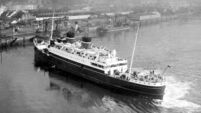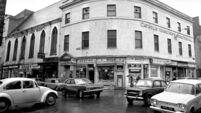Throwback Thursday: When Cork burned... and shawlie memories
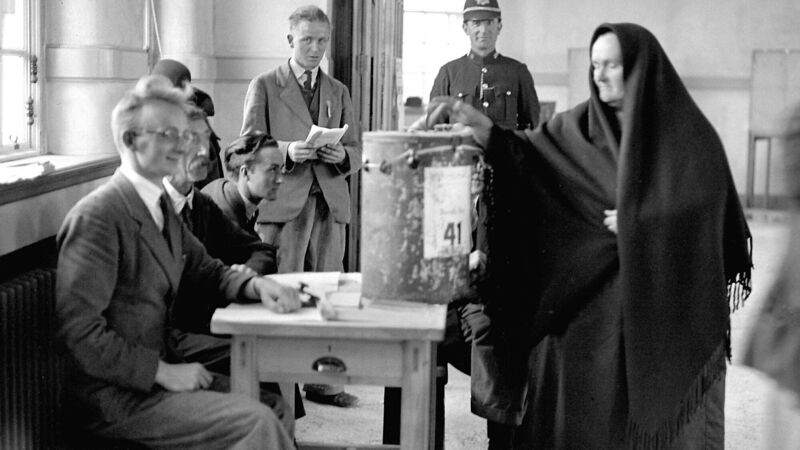
A shawlie voting in the Municipal and County Council elections in Cork in June, 1934. A Throwback Thursday reader today shares his memories of the shawlies of Cork city.
GER Fitzgibbon, former head of Drama at UCC, has just published a marvellous novel based around the dreadfully true facts of the torching of our beloved home city back in 1920, while creating within that a network of the myriad different citizens profoundly affected by the catastrophe.
Songs For A Burning City is a must for anyone with an interest in major incidents in Cork’s history.
There have been other books and documentaries on the burning of Cork by British forces, and most of us know that it took place on the night of December 11, 1920, during the Irish War of Independence.
It followed an IRA ambush of a British Auxiliary patrol in the city, which wounded 12 Auxiliaries, one fatally.
One side of Patrick Street was almost entirely destroyed in the inferno, and many other buildings, including the City Hall, as well.
Those are the bare facts; now Fitzgibbon adds a personal element by creating the stories and experiences of so many different Corkonians, from the well-to-do barrister and the ex-army officer, through the working girls and the panic-stricken mother who can’t locate her child in the confusion, to the courageous shawlies who are tough enough to survive anything.
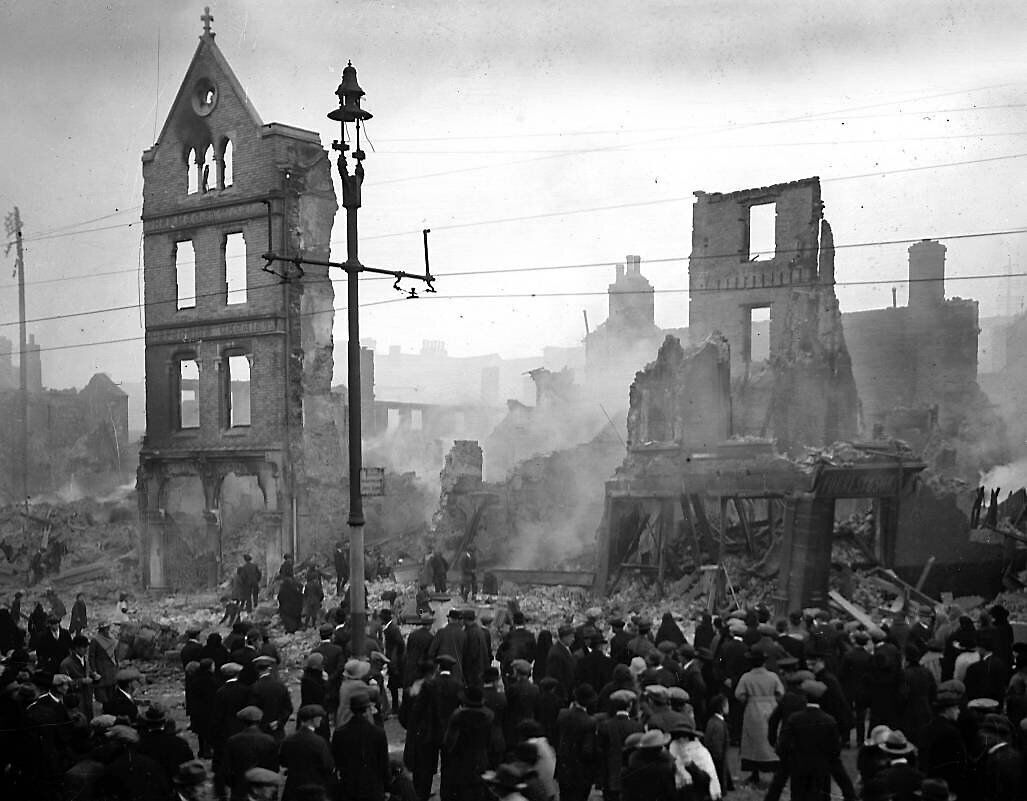
Once you start reading this, you can’t stop, as you follow each person’s experience of that terrible night.
“The key element in the original idea was discovering that there was a performance of The Gondoliers in the Opera House that very night,” says Ger.
Because of the imposed curfew of 10pm, it was scheduled to come down between 8.30pm and 8.45pm. The last trams left the Statue at 9pm, so it was tight enough.
“However, the trouble (shooting, terrorising people, breaking into shops, etc) began well before 9pm. The last tram up to St Luke’s was stopped halfway up the hill by Auxiliaries, everyone was thrown off at gunpoint, a priest was beaten up, etc. The tram driver was forced to take the tram back down to the Statue terminal, where it was set on fire.”
That actual production of Gilbert & Sullivan’s The Gondoliers was staged by the Cork Operatic Society, under the baton of Professor Theo Gmur - a Swiss musician who was married to a Corkwoman.
Various old Cork showbiz names were involved, including Percy Diamond and the writer Geraldine Cummins. But Fitzgibbon stresses that he has fictionalised the production, and changed names.
“In the novel, it’s The Cork Choral and Musical Society. Also, the production in the book is a bit more shambolic, both because the cast are a bit out of control and, as the show goes on, word filters in of that major trouble growing outside.
The original production was, I am sure, much more orderly and disciplined!
Ger adds: “One of the things I was interested in exploring was the strange sense that Gilbert & Sullivan (G & S) productions were a kind of insulated, democratic place where people from all sorts of different social, political and religious backgrounds and convictions came together to do a show.
“Their paths might not cross again in the normal course of things, but for that period they were a real community.”
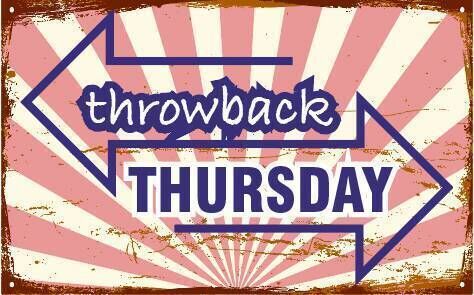
You’re right there, Ger. In the heyday of G & S productions here (which lasted right up to the 1970s), people from all walks of life and all corners of the city joined the cast, making close friends during the run of the show and often continuing that friendship afterwards. Many met their future spouses there.
“My main source was actual eyewitness accounts from the aftermath of the burning, newspapers, etc,” says Ger, “but the most intriguing and stimulating material came from a slim volume, published in 1921 by the Irish Congress of Trades Unions, called Who Burned Cork City?
That’s mainly a collection of formal witness statements which, collectively, allow us to catch glimpses of what it was actually like.”
And does it ever come across. Any regular reader of Throwback Thursday who buys the book will follow the characters as they flee for their lives from the rampaging soldiery, dodging down Fish Lane, turning back from the dangers of Patrick’s Bridge to try Brian Boru Bridge, sliding up North Main Street, hoping not to be spotted, taking the tram out the Western Road, only to see one of their fellow passengers dragged off and searched.
Many of those unlucky enough to be seized ended up at the Bridewell.
The classic old pubs come into it too, especially those which held secret ‘after hours’ sessions for anyone who ‘knew the knock’ to gain admittance.
Posh hotels like the Victoria and the Imperial saw their share of danger, while at a large jewellery store on Patrick Street, the manager, his wife, and the entire staff of girls who lived upstairs over the shop, watched in horror as their past, their present and their future collapsed in smoking ruins.
No more, you have to read this one yourself! There is a story woven around a blue tricycle in a North Main Street toy shop window (no need to name it, we all know whose it was) that will stay in your heart forever.
Songs For A Burning City, by Ger Fitzgibbon, is available in all good bookshops and also direct from the publishers www.menmabooks.eu, postage free.
A striking coincidence is that one episode in the book fits in very well with some real-life memories just sent in by Willie O’Sullivan.
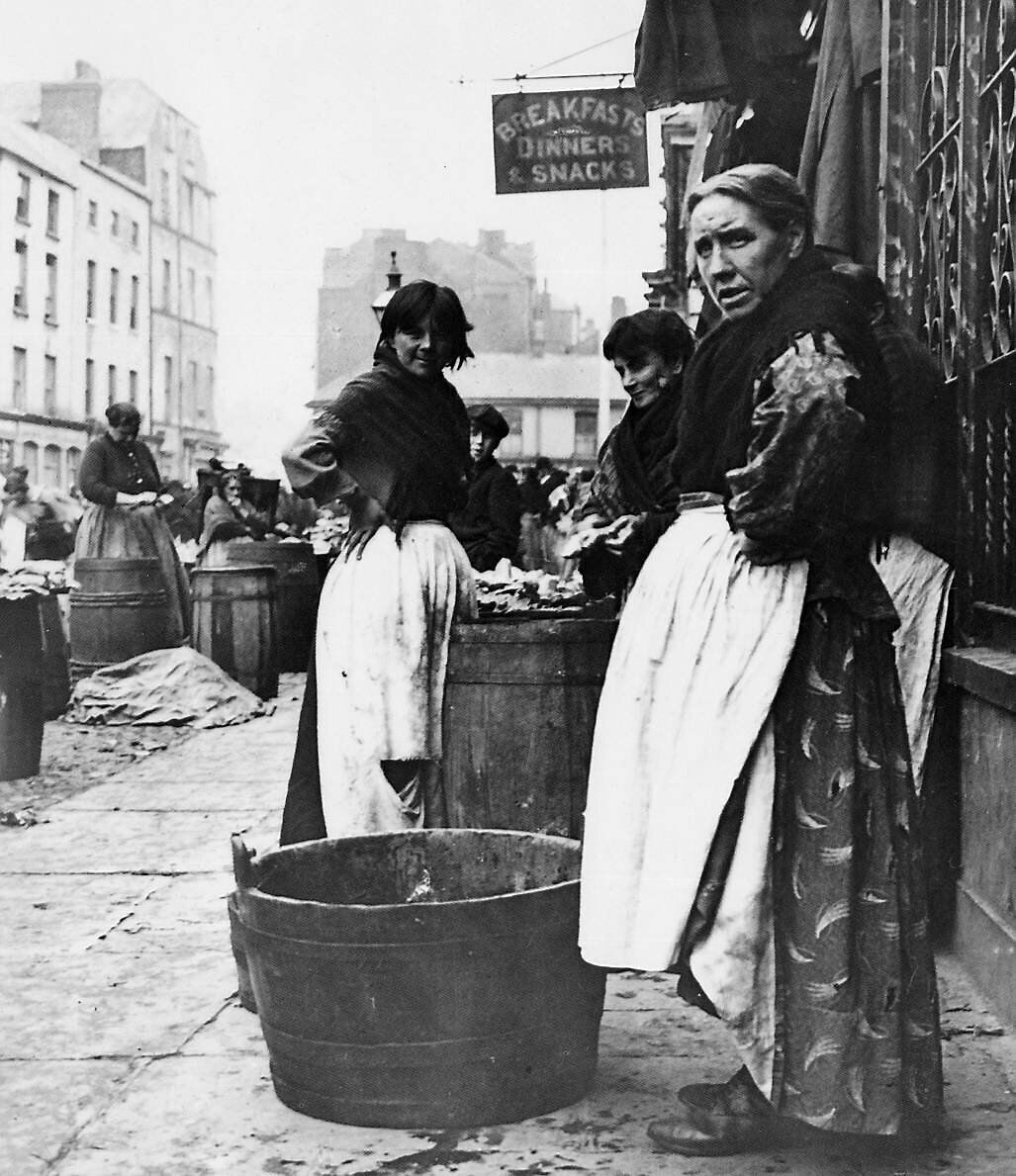
Near the start of the novel, Fitzgibbon describes Maude, an exhausted “shawlie,” packing up for the day when her sister arrives to urge her to join in a trip to the Opera House. Maude is less than enthusiastic: “Now that she mentioned it, Maude vaguely remembered some conversation about this, but it had been late at night and after a couple of pints.
Anyway, she couldn’t go now. She was worn out after a day standing in the street, trying to flog bits and pieces to a population made tight-fisted by the cold, and she only had her big black shawl with her.
“I’ve no coat with me, nor nothing.”
“Joan has a couple of lovely coats there, she’ll give you a lend, won’t you, Joan?”
Joan, two stalls down, turned and looked at Kathleen. “I will yeah. Would ye like a matching hat and gloves to go with it?”
“Ah Joan, c’mon, be a sport, willya...?”
Remember a time when second-hand (and even third-hand) clothing was of value? Very unlike the throwaway society we have today.
Back in medieval times, clothing was valuable enough to be handed down in wills; 1920s Cork had its own practices, which were still in use as late as the 1970s, before charity shops were ever heard of.
Willie O’Sullivan should know. His family was involved in this industry for several generations: “It began with my grandmother, known to everyone (even outside the family) as Nana Buckley. Nana was one of the original shawlies of the ’40s and ’50s, and was very well known on the Northside.
She set up her trade of buying and selling second-hand clothes on Kyle Street, around the corner from Cornmarket Street, between the Bridewell garda station and Kilgrew’s bicycle shop on the North Main Street.
“Nana had a large family of 12, three boys (Charlie, William, and Seanie) and nine girls, Nellie, Catherine, Rita (my Mam), Breda, Patsy, Emma, Noreen, Sile, and Annie. The first six named girls would follow Nana’s lead of Coal Quay trading for years, becoming known as the Buckley Girls.
“I would love to hear of any ladies of that era who remember them. I know there will be lots.”
They were the hardest working women he has ever known, affirms Willie.
“I know this because I saw first-hand what my Mam’s day’s work was. She would be up at the dawn for household duties before setting off, with me in tow, hanging on to the handlebars of the pram.
“I must mention that pram, as I haven’t seen this type in years. It was a huge double one with large spoked and springy wheels. The brand name was Hilsers, and I’m sure people will remember them. The girls would use them to transport what they called their packs. The packs were the clothes they had bought, placed in a sheet, tied at the four corners, flung over their shoulders and into the pram, or, as we called it, ‘De Boat.’
“Back to my Mam’s journey. We would leave our house on Spangle Hill, travel down the boreen (Farranferris Road), past the Bishop’s Palace, Shandon Street, North Main Street, and on to Friar’s Walk. I must explain at this point that all the girls had their own areas to travel to, in order to buy, but they were all on the south side, as that was seen as the more affluent area.
Buying the clothes was just the start of the process. They then had to bring them home, wash, dry, and iron them. They were then laid out on the same sheet, on the footpath of Kyle Street, for sale.
“This part of the day was fascinating. I would sit on the kerb and watch the girls haggling and dealing until the sale was agreed.
“It’s amazing how small things stick in your mind forever. One of these things is the Bridewell sergeant pounding down Kyle Street with his huge hobnailed boots. To me he looked like a giant, but then I was only a small child. He was doing his rounds, checking the licences of the traders. It was called the Hawker’s Licence, which you had to have to sell your clothes.
“I think a similar licence was also needed by fishermen to do their job. Come on, all you fishermen, jog your memories and clarify my way of thinking!
“Back to the sergeant. I can picture him marching down the street and heading straight for Nana. ‘Good morning, Mrs Buckley,’ (he was one of the few who didn’t address her as Nana Buckley), ‘it’s that time of year again. Can I see your licence?’
The next transaction was one of those things that really stick in your mind. The sergeant would read the licence, hand it back to Nana, and then turn around to chat with someone else, allowing Nana to pass it on to Nellie.
“This process would continue until all seven (Nana and six daughters) would be deemed covered for another year.
“The sergeant obviously knew times were hard for the girls, and saved them a few bob. Well done! Wouldn’t it be great if they were the only laws being broken today? (By the way, I won’t get that sergeant into trouble, as he’s checking licences in the sky today!)”
Willie adds: “On a recent trip down Kyle Street, I met with a Mrs Lane (a trader still operating today) who remembered Nana Buckley and the girls fondly. I chatted with her for a while, and asked her did she remember ‘good hansel’? That’s another one of those things that stick in my mind. ‘I certainly do,’ she said. ‘There is a man who still calls to me every Monday morning, not to purchase, but to give me good hansel for the week.’
“I think I probably should explain the term. You see, when trading would start early in the morning, women (and men) would be ruffling through the clothes on the ground for a bargain. Now, whether they purchased or not, a coin would have to be exchanged between them and Nana or one of the girls. This would ensure a busy day ahead, or, if it was Monday, a good week would be had.
“The girls really believed this would be the case, as it was proven so often.”
Wonderful glimpses into Cork’s past and its practices! Let’s hear yours. Email jokerrigan1@gmail.com. Or leave a comment on our Facebook page: https://www.facebook.com/echolivecork.
